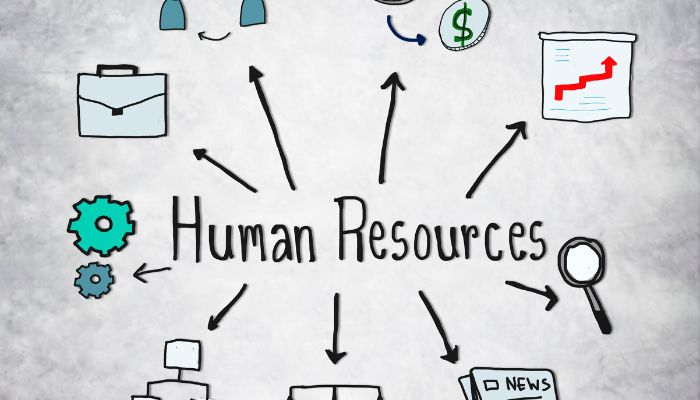Every organization has goals and objectives which it aims to achieve within a defined period. In line with this, they pour vast amounts of resources towards ensuring these targets are met. To achieve these goals, a lot has to do with the quality of work put in by employees. As such, maintaining a high level of productivity is essential to the success of every organization. One way to ensure this is to guarantee and constantly improve the nature of employee engagement.
In the corporate world, employee engagement is like a buzzword. Leaders and managers spend considerable time discussing how to keep employees engaged and how to motivate employees. This goes to show how important keeping employees engaged is for organizations. According to research carried out by Jacob Morgan, companies that invest in employee engagement are four times more profitable. They also have two times the average revenue when compared to companies with little or no investment in employee engagement.
What is employee engagement?
The nature of the workplace environment is a very crucial factor that influences employee productivity. Research shows that employees who perceive their work environment as toxic and unsatisfactory are less productive than employees who feel differently about their workplace environment.
According to a study carried out by Employee Benefits News in 2017, the respondents cited unsatisfactory conditions in terms of work-life balance, compensation, manager relations, and career development as a reason for changing their jobs. Many studies have also made similar reports regarding the negative effects of inadequate employee engagement in organizations.
Employee engagement is a workplace approach designed towards creating the right conditions for all employees and members of the organization to maintain high-level productivity. Employee engagement also improves all-round employee experience in an organization. It’s a strategy that keeps employees motivated to contribute to the success of the organization while having an enhanced sense of their wellbeing.
In the corporate world, there are three categories of employees – engaged, not engaged, and actively disengaged employees. Engaged employees are loyal and emotionally committed to the organization. They work at roles where they excel and eagerly take on responsibilities, not within their job description.
Employees that fall under the not engaged category (they form 67% of the workforce) are somewhat in between. They’re not entirely satisfied with their job roles as they do the bare minimum at work. They’re also not entirely in-tune and most often disinterested in the company’s success or productivity. With the right approach, this set of employees can be transformed into engaged employees.
The actively disengaged employees who make up 18% of the workforce, are always negative people that create a toxic environment at work. They spread this toxicity within the organization, and it’s often impossible to reshape these types of individuals. In terms of the financial implications, countries such as the United States lose over $550 billion yearly to actively disengaged employees.
According to Gallup Data, companies with a high level of engagement report 22% higher productivity. As a result of this, organizations are investing a lot to improve employee engagement. Aside from increasing employee productivity, adequate employee engagement in an organization reduces the level of employee turnover.
Maintaining employee engagement and productivity during COVID-19
Working from home during COVID has been the new normal for a while now. This practice of telecommuting has created new trends within the virtual community, as well as challenges. Managers confront the issue that borders on how to engage remote employees. To achieve this, employers have to ensure flexibility for motivating employees during this period. Here are few things to consider.
Keeping everyone involved: The coronavirus pandemic is a challenge no one was prepared to handle. As such, while organizations are frantically working towards surviving the harsh economic situation, it’s very easy to get caught up in the frenzy; hence, creating the need to figure it out individually. This can lead to an unnecessary build-up of pressure and anxiety.
In planning the next steps, ensure the team is integrated and engaged so members can work together to draw up comprehensive plans. Determine activities and responsibilities that employees can focus on so they would have enough to do. Active communication with employees about their career development trajectory can also help improve employee engagement and the mental health of remote employees.
Stay up-to-date with remote practices: Scientists and researchers are frantically working towards making safe vaccines available at least before the end of the year. Until this happens, it’s not expected that things will go back to normal. Essentially, employees will work remotely for a long period. And even after the pandemic is over, many predict that remote working will remain.
For managers to maintain a healthy level of employee engagement, it’s important to reevaluate the nature of remote practices. Employers have to ensure that workers have access to digital devices for sufficient connectivity. With this, employees can be engaged through the use of online team building activities.
Adapting to telecommuting realities: As stated earlier, employee engagement creates an environment that keeps employees motivated in achieving organizational goals. Now that most employees are working from home during COVID, work has now shifted to a more virtual space. New strategies to ensure flexibility for motivating employees will be required.
In this regard, managers must take into cognizance the complications of working remotely that employees face. As such, staff members will benefit from flexible work hours as well as a show of empathy towards certain nuances that come with working from home.
Track goals and objectives: While working remotely, it’s quite easy for employees to grow dissatisfied with their jobs especially when they don’t understand what role they play. As such, team leaders must create an environment that encourages free and clear communication between employees.Also, goals and objectives must be communicated to employees and each worker’s role in achieving this must be stated. Employee productivity tracker can be used to monitor and manage employee productivity. This would increase the level of employee engagement for teleworkers.
References:
- How to maintain employee engagement and productivity during covid19 | Manda Cuthbertson and Erin Ashton
- 5 powerful steps to improve employee engagement | Brent Gleeson|October 15, 2017
- Why’s employee engagement important to a company’s success? | Jessica Brook|May 7, 2019






